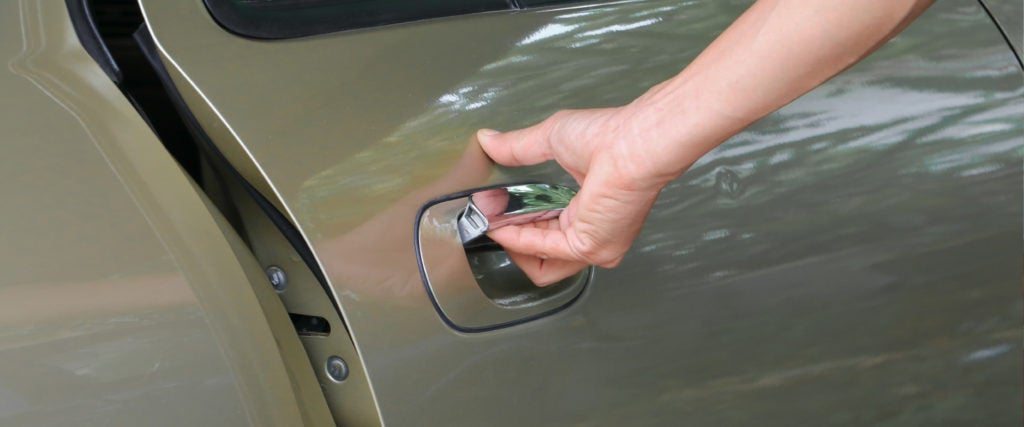A few years ago, the rear door on the passenger side of my 2012 Nissan Sentra went a little wonky. Ever since, it feels like if you pull on it too hard, it’ll just fall off. These days, then, I mostly just leave it shut. But when I do open it, I re-open and close it a few times until I hear that sound. You know the one — the comforting, firm and unwavering thwack that leaves no doubt that the door has been properly shut good and tight, nothing ajar in the slightest.
So imagine my surprise when I recently came to learn that that sound is total and utter bullshit, created to provide peace of mind and nothing else really.
It’s all to do with something called “psychoacoustics,” which, broadly speaking, is the study of the psychological, cognitive and sensory responses associated with sound. This, of course, is of great interest to manufacturers, who want to better understand how they can manipulate sound to attract more customers. Examples include determining the correct volume of music at bars to maximize spending and engineering the sounds your phone should make while locking, typing, sending alerts, etc.
When it comes to cars, the automotive industry has found that there is a significant amount of cognitive association between sound and quality. And while you might think that the most important psychological association made between the sound a car makes and its quality is the purr of an engine, in reality, it’s the door.
“Engineering the sound of a car door closing can be traced back to changes in the car manufacturing industry 10 years ago,” explains James Ford, co-founder of the online car parts shop AutoBead. “Increased safety measures meant that car manufacturers had to add extra bars to the side doors to meet safety regulations, which subsequently impacted the sound that doors made while closing.”
“One of the first things a prospective car buyer encounters is the sound of the driver’s door closing — often inside the showroom. This sound gives a subconscious sense of value,” adds Jonathan Berger, a music professor at Stanford University’s Center for Computer Research in Music and Acoustics.
As such, per Ford, manufacturers quickly realized that “engineering the right sound of a car door closing was their first opportunity to make buyers feel the car’s quality, craftsmanship and safety and to justify a premium price tag.”
Berger cites an experiment he ran with his psychoacoustics class in which people heard eight different car door sounds and rated them from least to most expensive. “Our hypothesis that a low-frequency thud with a short duration and no trailing sound would be perceived as the most ‘high class’ vehicle was correct in terms of frequency — a low, soft thud seems ‘fancier’ than a high frequency one,” he explains. “But to our surprise, the ‘short duration and clean tail’ didn’t hold. The sound with the highest perceived value had an after sound — imagine a ‘ker-chunk.’”
His findings mirror decades of other research done on the subject. “If the car door sound is tinny, the connotation is that the whole vehicle is cheap and not solid,” reads a 2016 Purdue University study entitled “Characterization of Next-Generation Car Sounds.” “In contrast, a full saturated sound of the closing of a car door has a connotation of luxury.”
To that end, car companies go to great lengths to guarantee that the sound of their doors live up to the lofty price tag, and why the door of a 2020 Mercedes will likely sound the exact same as its 2008 counterpart. Tobias Beitz, manager of sound quality and design at Mercedes, explained the process in a 2014 interview with Bloomberg. “A good sound is not a matter of weight,” he said. “The door sound is mainly ensured by the optimal acoustic design of the door structure, latches and seals.”
In other words, it’s been completely manufactured. “Each brand has their own sound engineers who use specific combinations of soft materials such as mats or foam and apply them to the metal surfaces of the door to absorb or block unwanted noise and create a unique sound — this ensures that dampeners that have been added into the door cavity to create the right low-frequency ‘thwump’ sound,” Ford explains. “Then they’ll alter the locking mechanism to make just the right sort of click. Without the dampener in place, the car door closing would sound more like two pieces of metal colliding.”
Admittedly, knowing this isn’t going to hold much immediate value. It’s not like a car salesman is going to knock off five grand from the sticker price because you’ve called him and the manufacturer out on their cynical psychoacoustics game. But according to Berger, determining the subtleties that drive our emotional responses holds great long-term value. “We live in an ever-increasingly noisy world, constantly faced with alarming and alluring sounds and repulsive and seductive sounds,” he says. “Understanding how the auditory system disentangles the jumble of noise we subject ourselves and others to is important in navigating through that jumble.”
Or in plainer terms, it’ll give you a much greater sense of when your ears are deceiving you.

